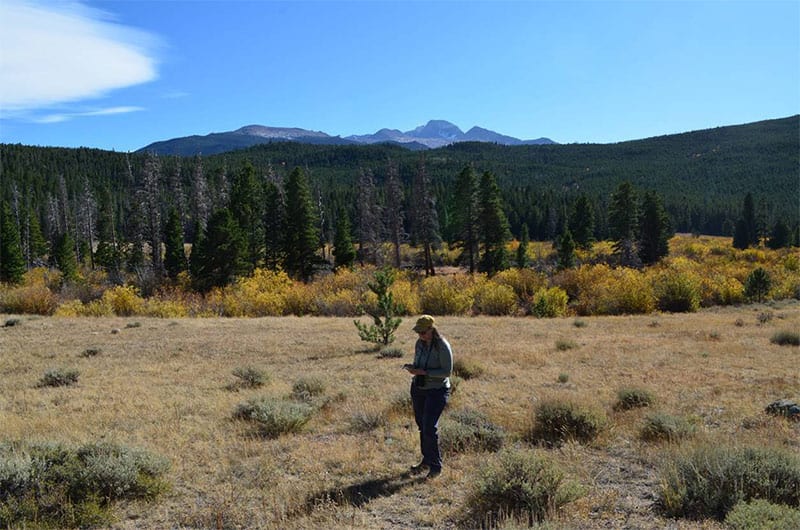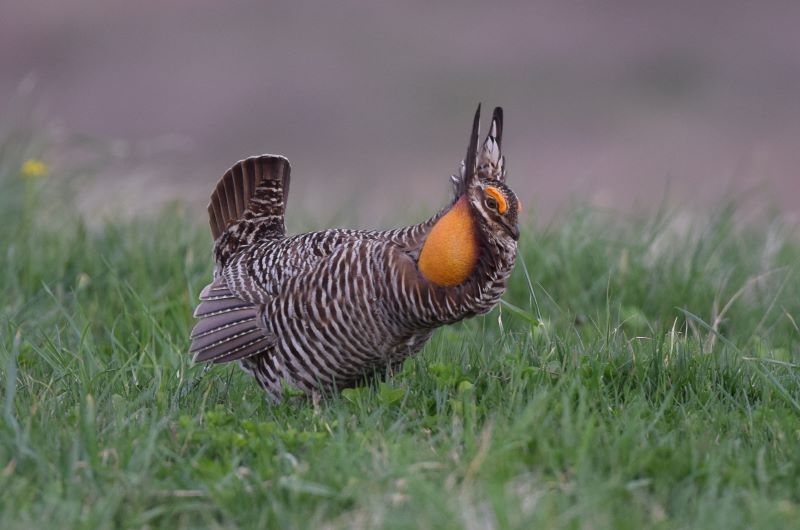LandPKS News & Updates
Our Blog

Wildlife Potential
The story behind the LandPKS Habitat Module, a tool for wildlife conservation created in conjunction with The Nature Conservancy.
The greater prairie chicken, a species found in the Great Plains of North America, has an elaborate mating ritual. In the spring, males gather on breeding sites, known as leks. Each male defends a small territory on the lek. To attract females, the males stamp their feet rapidly, make booming sounds with their air sacs, and leap into the air with loud cackles. After having mated, the females retreat to their nearby nests, where they lay an egg. The next morning, they return to the lek and mate again, usually with a different male. Lekking mostly occurs just before and after sunrise in March and April, making early spring mornings the best time to observe greater prairie chickens.

Photo credit: © Andy Reago & Chrissy McClarren
Terri Schulz of The Nature Conservancy in Colorado has talked with ranchers about the chickens, their sensational courtship display, and their habitat requirements. Once a land manager knows the needs of the prairie chicken, they can begin to adjust management to improve the habitat. Prairie chickens usually nest within a mile of the lek, and because they build their nests hidden in tall grass, it is beneficial when some areas near the leks are left ungrazed during the nesting season (e.g., before July in Colorado). This hiding cover is especially critical during the nesting period when nests and chicks are most vulnerable to predation.
“Ranchers love their land, and they know a lot about how to improve prairie conditions and what their livestock need. But they don’t necessarily know what their wildlife needs,” Terri says. Over the years, Terri found herself communicating a lot of habitat information one-on-one to land managers. She began to think about ways that information could be made more easily and systematically available. As a LandPKS user, she had the idea to provide habitat information through a tool which many land managers already found valuable.
The beta version of the Habitat Module was released in October 2020, and LandPKS users are invited to test it and provide feedback (including recommendations for additional species). The module conveys what types of management actions work best for species and flags activities that could be detrimental to them. “No big changes in management are required,” Terri explains. “It’s not just about having tall grass, or about not grazing. There are some species that like having the grass grazed hard during the year. Some species have evolved to nest on bare ground. If we want to have the full diversity of species, we need to have a diversity of habitat types.”
Another example of how easy adjustments can benefit species is making fences less impactful for pronghorn antelope. Just the simple act of leaving gates open or, when building new fencing, ensuring fencing design is “wildlife-friendly,” can allow them to more easily move through the landscape. “Ranchers can use temporary fencing and other ways to move livestock which will also leave the landscape more permeable to wildlife movement,” Terri explains.

© Mark Godfrey, courtesy of The Nature Conservancy
The Habitat Module also contains information about species that any landowner can manage for, including anyone with a garden. By building Habitat within the LandPKS app, the utility of LandPKS is opened to a broader audience, people that are motivated by wildlife goals. Terri elaborates: “The monarch butterfly, for example, is dependent on milkweed, and the species benefits just by this one type of plant being available. So make sure you plant native milkweeds in your yard!”
The LandPKS-Nature Conservancy collaboration continues in full swing, with a series of webinars and additional species to be added in the new year. “This has been my favorite project of my entire career. The passion and desire to work on this project among the team members has been incredibly rewarding,” Terri reflects. She elaborates further, “A lot of land managers feel pride when they learn that they have been providing habitat to a species all along. The Habitat Module allows them to understand exactly what they’re providing, and how important that habitat is to certain plants or animals while meeting their livestock and vegetation goals.”
Terri Schulz is a Senior Conservation Ecologist at The Nature Conservancy of Colorado and an advisor to LandPKS.
Further reading:
About the LandPKS Habitat Module
About getting started using the LandPKS Mobile App
Mobile App | Data Portal | Knowledge Hub | Habitat Hub | Learning Collections | Blog | About | Contact | Support



